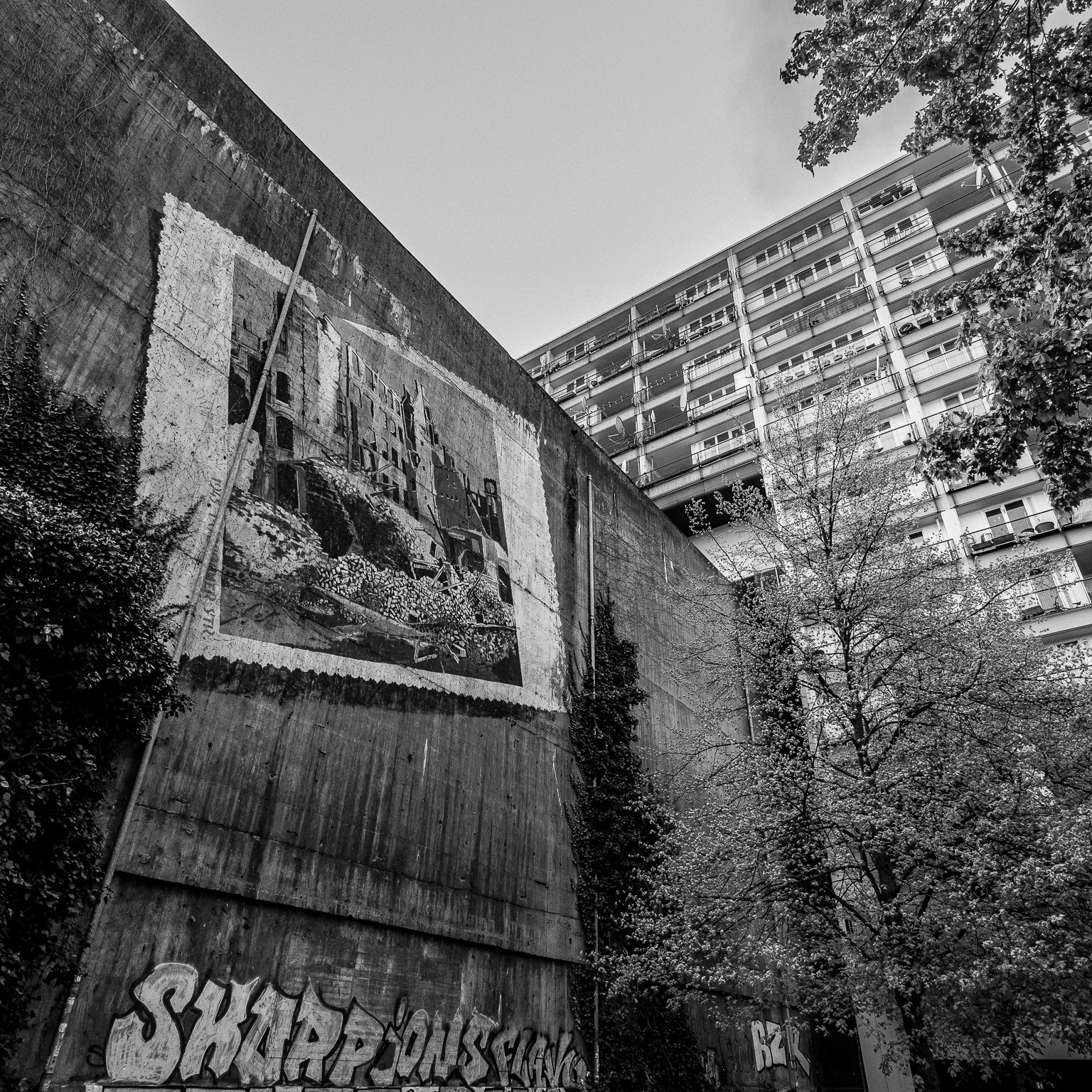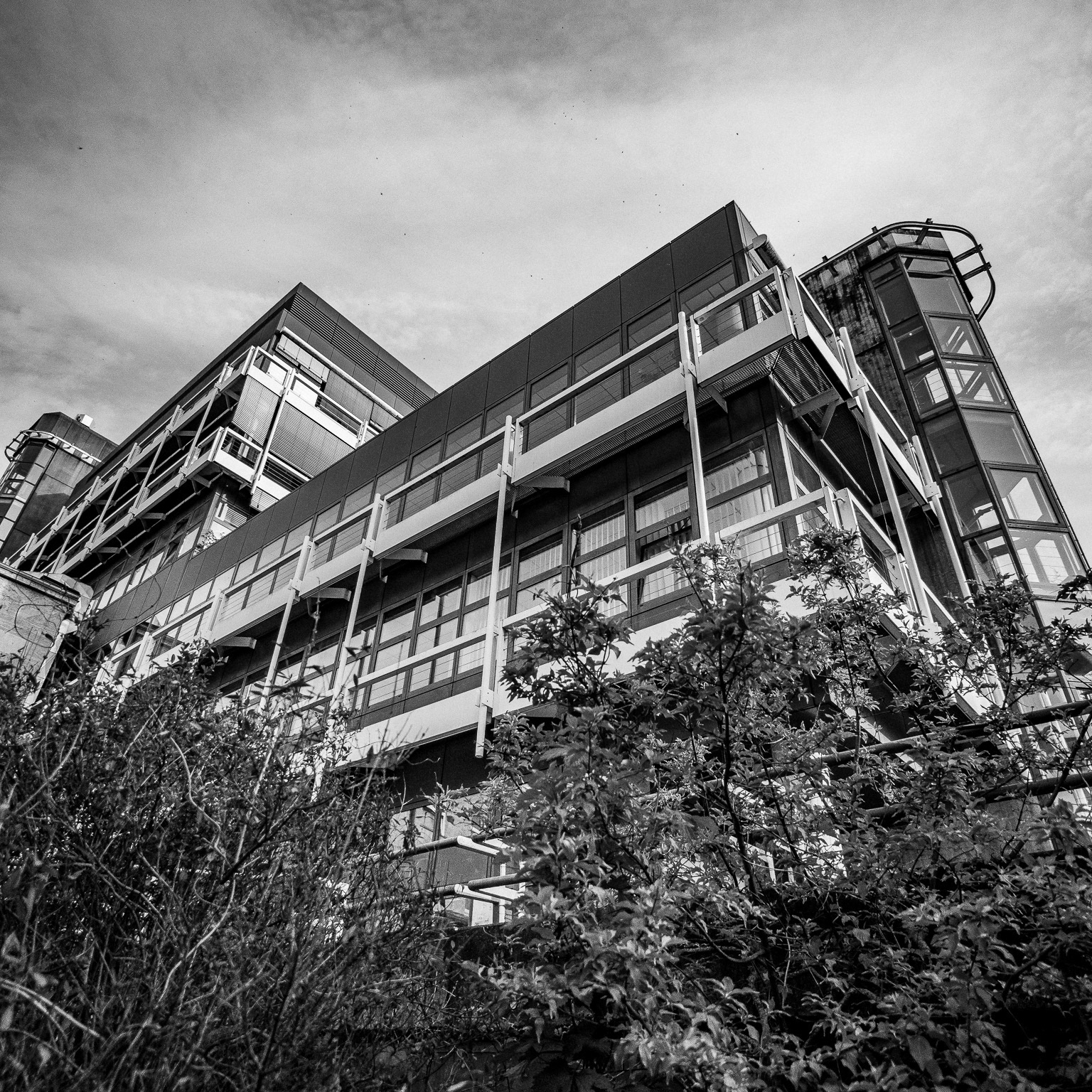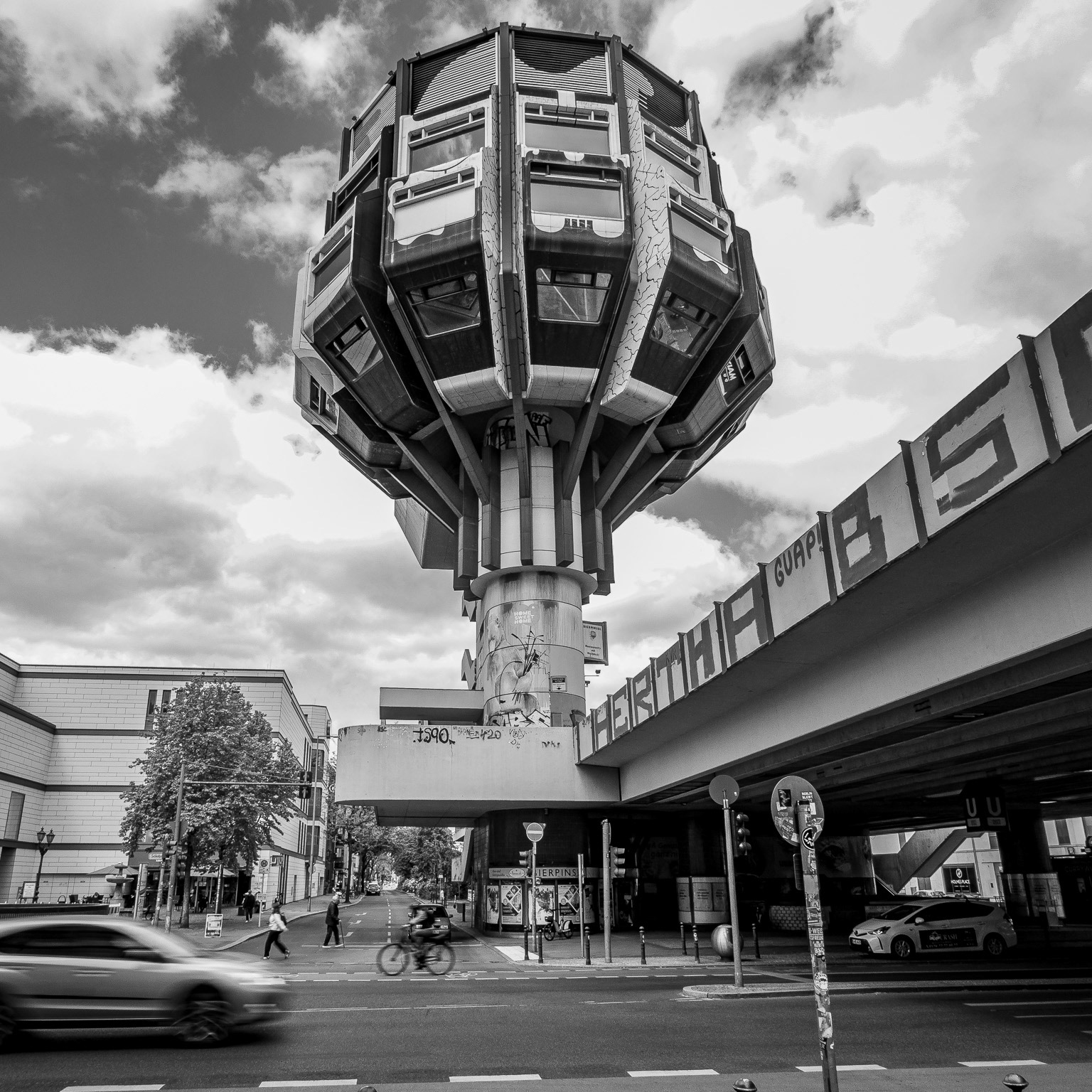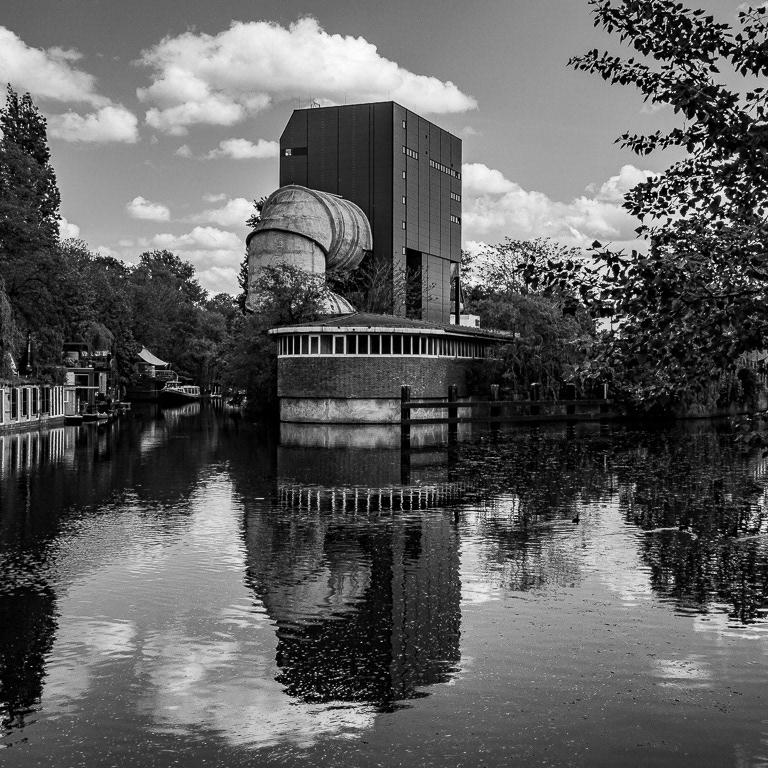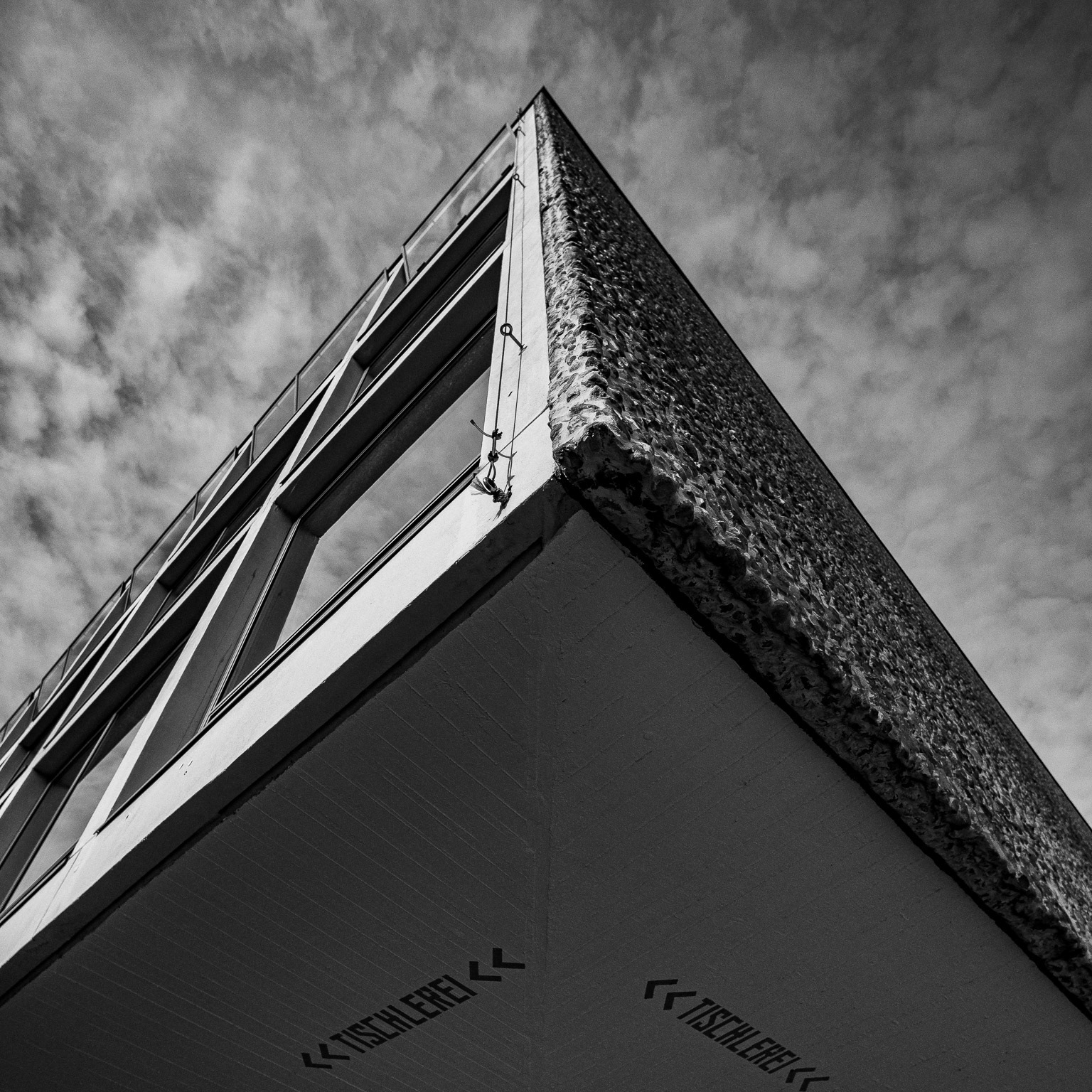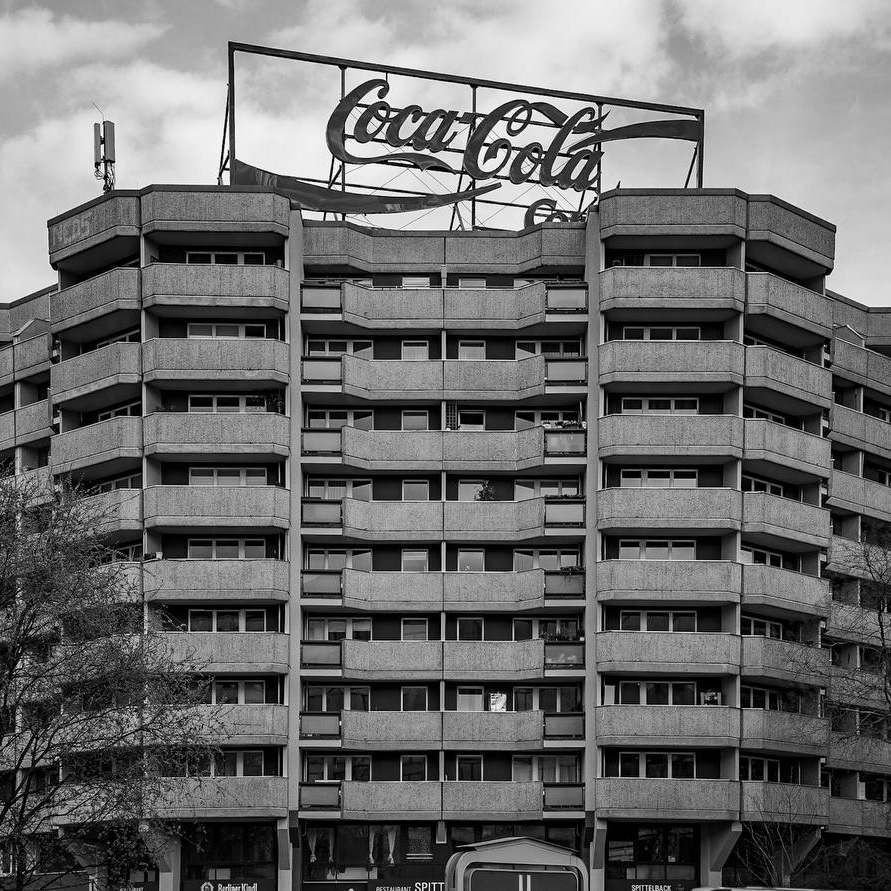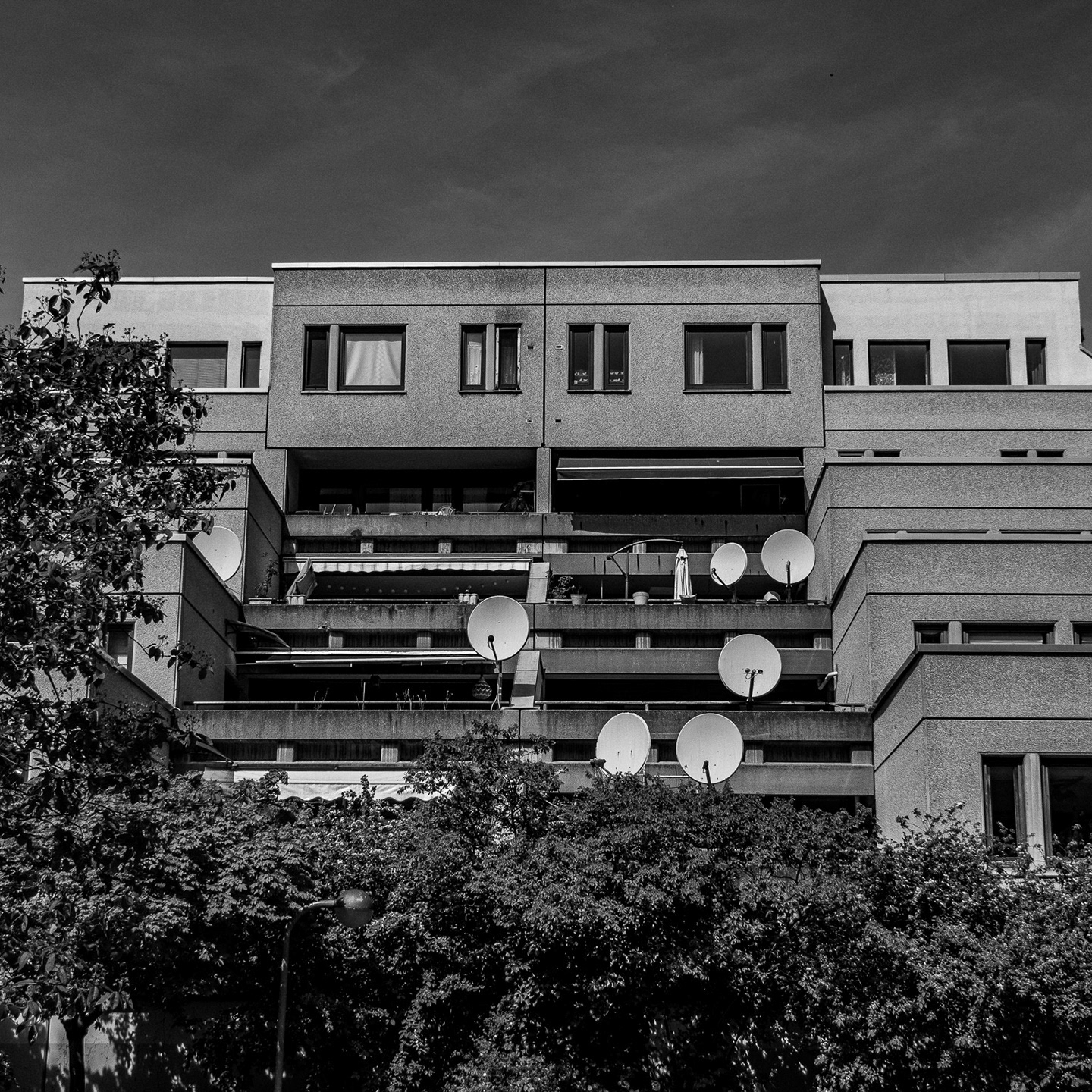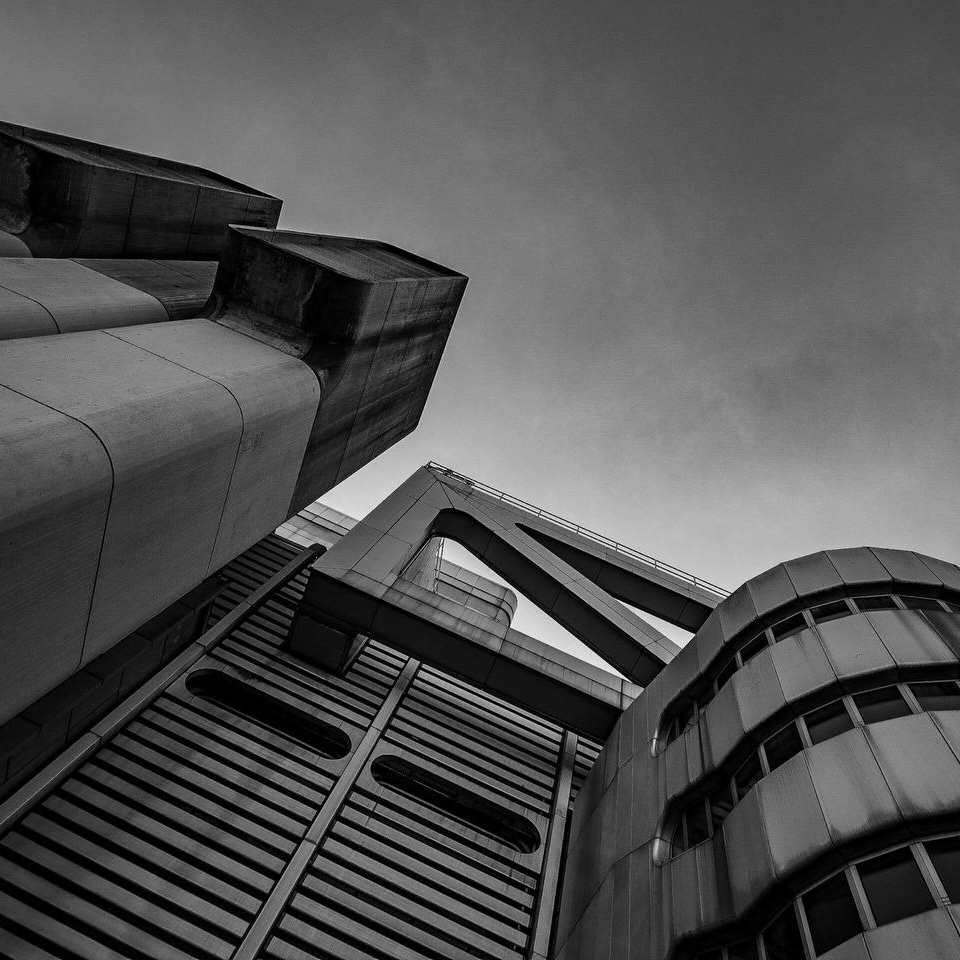10249 Berlin-Friedrichshain-Kreuzberg
In 1967, the SED Politburo initiated a competition for redesigning a square, leading to Hermann Henselmann’s winning design developed further by Heinz Mehlan’s team. The groundbreaking, attended by notable East German leaders, took place on November 7, 1968. This redevelopment aimed to create a new part of the socialist city center, demonstrating that prefabricated construction could achieve unique architectural expressions. The project resulted in varied-height residential buildings housing about 1,250 apartments, exemplifying socialist urban planning in East Germany. Symbolic elements in the design included a building representing a flag and the initials "SU" for the Soviet Union.
The square transitioned from the historical cityscape near Landsberger Allee, merging the old with the modern center around Alexanderplatz. Known as the "Wohnkomplex Leninplatz," this area, excluding the southwest side, is now under heritage protection and listed in Berlin's state heritage register.
Each building is distinctly marked, avoiding the typical "13" in address numbering. The official inauguration coincided with the unveiling of a Lenin monument on April 19, 1970.
Sources: https://de.wikipedia.org/wiki/Platz_der_Vereinten_Nationen_(Berlin)#Umgestaltung_in_der_DDR
Photos: Eric Bauermeister
